LINE HISTORY
The railway route through Bott Lane Halt had opened in stages: from Farington on the West Coast main line to Blackburn on 1 June 1846; Blackburn to Accrington on 19 June 1848; then onward to Burnley (Westgate) on (18 September 1848) and to Colne (1 February 1849). The station at Westgate closed but was reopened in 1851 as Burnley Barracks. At Colne end-on connection was made with the Leeds & Bradford Extension Railway (leased to the Midland Railway) which had been opened from Skipton on 2 October 1848. The East Lancashire Railway which completed the route from the west to Colne was absorbed by the Lancashire & Yorkshire Railway (LYR) in 1859.

COMPETITION FROM ROAD TRAMWAYS
In 1903 the LYR experienced a substantial reduction in traffic, with 1.75 million fewer passengers in the first six months compared to the previous year, a decline of 6.11%. One of the factors contributing to this decrease was a depression in the Lancashire cotton industry, but at least equally significant was the rise of competition from electrically-operated road tramways. Whereas steam-operated trains on the LYR lines tended to operate at irregular and, in some cases, infrequent intervals, trams generally operated frequently and used regular-interval timetables. Moreover, the earliest tramways usually followed main roads in built-up areas and called at closely-spaced stops, so providing a much more convenient service for the public; being electrically powered, the rapid acceleration of trams compensated for the more frequent stops. Tram fares were also competitive with train fares.
 The decline in traffic on the LYR in 1903 exactly coincided with the opening of electric street tramways in Nelson and Colne, the principal route being along Manchester Road and Leeds Road (Nelson) and Burnley Road (Colne), parallel and close to the railway. Nelson’s first 4ft-gauge line opened on 23 February 1903, and Colne’s on 28 November. Through-running was not possible until 1912 thanks to the low bridge under the LYR at Colne station; in this year two trams of reduced height were acquired which could pass safely under the bridge. To the south the Nelson trams connected with the Burnley network, which operated steam trams from the opening of the first route in 1881 but converted to electric traction allowing through running to Nelson. Burnley’s tramways were municipally owned from 1900; Nelson’s from the outset in 1903; and Colne’s from 1914. The decline in traffic on the LYR in 1903 exactly coincided with the opening of electric street tramways in Nelson and Colne, the principal route being along Manchester Road and Leeds Road (Nelson) and Burnley Road (Colne), parallel and close to the railway. Nelson’s first 4ft-gauge line opened on 23 February 1903, and Colne’s on 28 November. Through-running was not possible until 1912 thanks to the low bridge under the LYR at Colne station; in this year two trams of reduced height were acquired which could pass safely under the bridge. To the south the Nelson trams connected with the Burnley network, which operated steam trams from the opening of the first route in 1881 but converted to electric traction allowing through running to Nelson. Burnley’s tramways were municipally owned from 1900; Nelson’s from the outset in 1903; and Colne’s from 1914.
THE RAILWAY’S RESPONSE; RAIL-MOTORS AND HALTS
The LYR was not the only company to experience a decline in traffic within urban areas. In Tyneside and Merseyside the local railway response to road electric tramways was to electrify some routes (a response colourfully described as ‘fighting the devil with fire’) but elsewhere beleaguered railway companies opened simple and inexpensive stations between the existing ones and introduced extra trains. The Great Western Railway (GWR) was the first company to take this initiative in 1903, between Stonehouse, Stroud and Chalford, in the densely populated Stroudwater valley in the Cotswolds, where there was a long tradition of textile manufacture; here a number of unstaffed ‘halts’ were opened, served by a ‘steam rail motor car’ in which tickets were sold. In several respects the Stroudwater valley resembled the urban sprawl that had developed between Burnley, Brierfield, Nelson and Colne, so it seems fitting that the LYR took the same steps and in September 1906 introduced a ‘rail-motor’ service between Burnley Bank Top (now Burnley Central) and Colne. The company’s first experiment of this type was on the Bury – Holcombe Brook branch in July 1905. Between Nelson and Colne a ‘halt’ was opened at Bott Lane to be served by the rail-motor, possibly in September 1906 when the service began, although it was the following month before it first appeared in Bradshaw; Bott Lane was followed by ‘halts’ at New Hall Bridge (March 1908) and Reedley Hallows (May 1911), both between Burnley Bank Top and Brierfield stations. The rail-motors for this service were built by Kerr, Stuart at Stoke on Trent and were delivered to the LYR in June 1905. The locos were unusual in that they had two transverse boilers with a common smokebox and hence three doors. The carriage was one class only and had reversible seats for 48 passengers. They were scrapped in 1909 when the LYR had built enough of their own to a much better and conventional design.
 The LYR ‘rail-motors’ perhaps went some way to win traffic back from the trams, but their services were less frequent and at irregular intervals. Perhaps the LYR could have taken advice from the consultants who counselled the North Eastern Railway that their Tyneside electrics should run at least every 20 minutes and at regular intervals so that passengers needed no timetables and could turn up at their station at any time in the knowledge that they would not have long to wait for a train. A glance at the timetables below will show how far short of the ‘frequent and regular’ pattern the Burnley-Colne rail-motor service fell, although it must be pointed out that Burnley Bank Top, Brierfield, Nelson and Colne stations were also served by a good number of longer-distance trains. The advantage that the rail-motors enjoyed was a much faster end-to-end service than the trams of the three separate operators could provide. The LYR ‘rail-motors’ perhaps went some way to win traffic back from the trams, but their services were less frequent and at irregular intervals. Perhaps the LYR could have taken advice from the consultants who counselled the North Eastern Railway that their Tyneside electrics should run at least every 20 minutes and at regular intervals so that passengers needed no timetables and could turn up at their station at any time in the knowledge that they would not have long to wait for a train. A glance at the timetables below will show how far short of the ‘frequent and regular’ pattern the Burnley-Colne rail-motor service fell, although it must be pointed out that Burnley Bank Top, Brierfield, Nelson and Colne stations were also served by a good number of longer-distance trains. The advantage that the rail-motors enjoyed was a much faster end-to-end service than the trams of the three separate operators could provide.
WHEN IS A ‘HALT’ NOT A ‘HALT’?
The various pre-Grouping companies pursued their own, sometimes internally inconsistent, classification of these new small stations. As mentioned above, the GWR called them ‘Halt’ (originally spelt ‘Halte’) but later upgraded some, or opened new ones, as ‘Platforms’ staffed by a porter who might issue tickets; then, later on, the GWR demoted some stations to halts. The LYR did not add the ‘Halt’ suffix, but Bradshaw’s timetables, perhaps to save space, relegated the three new Rose Grove-Colne stations to footnotes and described them as halts; probably as late as the 1930s Bradshaw stated neither which trains called nor at what times. When they were promoted to the ‘station bank’ (list of stations) in timetables Bradshaw ceased to call them halts. Ordnance Survey large scale maps did use the ‘Halt’ suffix. In British Railways (BR) days, Bott Lane and its neighbours were not halts; however in 1957 the BR London Midland Region (LM) timetable noted that Bott Lane Halt and Reedley Hallows Halt had closed. Following Disused Stations website practice of calling stations (or halts/platforms!) by their final name, Bott Lane Halt it is, even if the official designation as ‘Halt’ was posthumous.
THE ‘HALT’ AT BOTT LANE
The choice of the name ‘Bott Lane’ for the halt, rather than ‘Bott House Lane’, the official name of the road, is interesting. Bennett’s History of Marsden & Nelson (1957) refers to the road as ‘Bott Lane’ and there has been some inconsistency in local use of the name.
 The new stations / halts opened by the pre-Grouping companies ranged from primitive rail-level affairs without lighting or shelter to more ambitious structures with platforms of conventional height with waiting rooms and illumination. By today’s unforgiving health and safety standards Bott Lane was incredibly primitive. The two platforms, if they could be dignified with such a description, consisted of a cluster of railway sleepers, and passengers had to board or alight from trains by means of lowered steps. The accompanying photograph, taken shortly before it closed, shows the up (south-east) platform accompanied by a modest, enclosed timber waiting shed with windows, a couple of electric lamp posts and an LMS nameboard (without the ‘Halt’ suffix). The new stations / halts opened by the pre-Grouping companies ranged from primitive rail-level affairs without lighting or shelter to more ambitious structures with platforms of conventional height with waiting rooms and illumination. By today’s unforgiving health and safety standards Bott Lane was incredibly primitive. The two platforms, if they could be dignified with such a description, consisted of a cluster of railway sleepers, and passengers had to board or alight from trains by means of lowered steps. The accompanying photograph, taken shortly before it closed, shows the up (south-east) platform accompanied by a modest, enclosed timber waiting shed with windows, a couple of electric lamp posts and an LMS nameboard (without the ‘Halt’ suffix).
When Bott Lane Halt opened there was discontinuous ribbon development of terraced houses along the main road from Nelson to Colne and on a few side roads, north-west of the station, but only a few scattered houses and cottages to the south-east, including Bott House itself.
In the Bradshaw 1910 timetable below the absence of train calls on weekdays from mid-morning until mid-afternoon is striking, in contrast to the Sunday trains which do not begin until well after midday and then call approximately hourly until early evening, resuming that frequency later that night.
Up trains: weekdays
Bradshaw April 1910 |
Destination |
Down trains: weekdays |
Destination |
5.38am |
Burnley Bank Top |
6.22am |
Colne |
6.33am |
Burnley Bank Top |
7.19am |
Colne |
7.30am |
Burnley Bank Top |
8.14am |
Colne |
8.38am |
Burnley Bank Top |
9.42am |
Colne |
2.33pm |
Burnley Bank Top |
3.14pm |
Colne |
3.25pm |
Burnley Bank Top |
4.14pm |
Colne |
4.43pm |
Burnley Bank Top |
5.49pm |
Colne |
6.18pm |
Burnley Bank Top |
7.29pm |
Colne |
7.43pm |
Burnley Bank Top |
8.24pm |
Colne |
8.38pm |
Burnley Bank Top |
9.24pm |
Colne |
10.03pm |
Burnley Bank Top |
10.42pm |
Colne |
Up trains: Sunday |
Destination |
Down trains: Sunday |
Destination |
1.18pm |
Burnley Bank Top |
1.56pm |
Colne |
2.18pm |
Burnley Bank Top |
2.49pm |
Colne |
3.13pm |
Burnley Bank Top |
3.49pm |
Colne |
4.13pm |
Burnley Bank Top |
4.49pm |
Colne |
5.13pm |
Burnley Bank Top |
5.49pm |
Colne |
6.13pm |
Burnley Bank Top |
6.39pm |
Colne |
7.08pm |
Burnley Bank Top |
7.34pm |
Colne |
7.58pm |
Burnley Bank Top |
8.24pm |
Colne |
8.58pm |
Burnley Bank Top |
9.24pm |
Colne |
9.48pm |
Burnley Bank Top |
10.14pm |
Colne |
Bott Lane is given only as a footnote in Bradshaw. No indication is given of which trains call or at what times. Burnley Bank Top is today called Burnley Central.
In January 1922 Bott Lane was transferred from LYR to London & North Western Railway (LNWR) ownership when the companies merged; for some years the LYR and LNWR had enjoyed improved relations and co-operation, and in the enlarged LNWR there was strong representation of LYR officials. The merger anticipated the ‘Grouping’ one year later when the LNWR was absorbed into the new London, Midland & Scottish Railway (LMS). The following timetable shows the departures from Bott Lane during the year when it was part of the LNWR. On weekdays the service runs throughout the day but at irregular intervals. Sunday trains, as in 1910, start in the afternoon, but even later than in that year.
In the November 1920 working timetable, the first rail-motor of the day left Colne at 5.48am and (calling at all stations and halts) reached Rose Grove at 6.12am, returning at 6.20am. There were ten such trains a day, the last one leaving Colne at 7.05pm for Burnley Bank Top, returning at 8.25pm from Burnley.
Up trains: weekdays
Bradshaw July 1922 |
Destination |
Down trains: weekdays |
Destination |
5.51am |
Rose Grove |
6.41am |
Colne |
7.03am |
Burnley Barracks |
7.48am |
Colne |
8.31am |
Rose Grove |
9.51am |
Colne |
10.33am |
Rose Grove |
11.41am |
Colne |
12.21am |
Burnley Bank Top |
12.59pm |
Colne |
1.38pm |
Burnley Barracks |
2.19pm |
Colne |
2.43pm |
Rose Grove |
3.29pm |
Colne |
3.38pm |
Burnley Bank Top |
4.14pm |
Colne |
5.11pm |
Burnley Barracks |
5.59pm |
Colne |
6.13pm |
Burnley Bank Top |
6.49pm |
Colne |
7.08pm |
Burnley Bank Top |
7.49pm |
Colne |
8.18pm |
Burnley Bank Top |
9.19pm |
Colne |
9.33pm |
Rose Grove |
10.25pm |
Colne |
Up trains: Sunday |
Destination |
Down trains: Sunday |
Destination |
2.03pm |
Burnley Bank Top |
2.49pm |
Colne |
3.03pm |
Rose Grove |
3.51pm |
Colne |
4.03pm |
Burnley Bank Top |
5.14pm |
Colne |
5.33pm |
Burnley Bank Top |
6.06pm |
Colne |
6.23pm |
Burnley Bank Top |
6.59pm |
Colne |
7.43pm |
Burnley Bank Top |
8.44pm |
Colne |
9.13pm |
Rose Grove |
10.01pm |
Colne |
Bott Lane is given only as a footnote in Bradshaw. No indication is given of which trains call or at what times. Burnley Bank Top is today called Burnley Central.
Until 1926 a Ground Frame of unknown design, construction and leverage was located at the Bott House Lane level crossing; its date of installation is not known.
The OS map of 1932 indicates that a few semidetached houses had been built close to Bott Lane Halt on the north-west side, but little other housing had been built within convenient walking distance. Nelson Municipal Secondary School (Nelson Grammar School from 1945) had been built on the opposite side of the line, several hundred yards south.

In July 1938 the frequency of trains is similar to 1922 but with variations between Monday-to-Friday and Saturday.
Up trains: weekdays
Bradshaw July 1938 |
Destination |
Down trains: weekdays |
Destination |
6.38am |
Rose Grove |
6.36am |
Colne |
8.17am Sat only |
Rose Grove |
7.41am |
Colne |
8.31am Sat exc |
Rose Grove |
9.51am |
Colne |
10.33am |
Rose Grove |
11.43am Sat only |
Colne |
12.08pm Sat only |
Rose Grove |
11.49am Sat exc |
Colne |
12.13pm Sat exc |
Rose Grove |
1.07pm Sat exc |
Colne |
1.38pm |
Burnley Barracks † |
1.11pm Sat only |
Colne |
2.38pm |
Burnley Barracks § |
2.28pm |
Colne |
3.48pm Sat only |
Burnley Bank Top |
3.28pm |
Colne |
4.08pm Sat exc |
Rose Grove |
4.24pm Sat only |
Colne |
5.11pm |
Burnley Barracks |
4.52pm Sat exc |
Colne |
6.08pm |
Burnley Barracks |
5.55pm Sat only |
Colne |
7.08pm |
Burnley Bank Top |
5.59pm Sat exc |
Colne |
8.18pm Sat exc |
Burnley Barracks |
6.54pm |
Colne |
8.31pm Sat only |
Burnley Barracks |
7.51pm Sat exc |
Colne |
9.43pm |
Burnley Bank Top |
7.56pm Sat only |
Colne |
10.43pm |
Rose Grove |
9.21pm |
Colne |
- |
- |
10.31pm |
Colne |
- |
- |
11.32pm |
Colne |
Up trains: Sunday |
Destination |
Down trains: Sunday |
Destination |
1.48pm |
Rose Grove |
3.06pm |
Colne |
3.15pm |
Rose Grove |
4.03pm |
Colne |
4.13pm |
Rose Grove |
5.14pm |
Colne |
5.31pm |
Burnley Bank Top |
6.08pm |
Colne |
6.23pm |
Burnley Bank Top |
7.11pm |
Colne |
7.43pm |
Rose Grove |
8.38pm |
Colne |
9.03pm |
Rose Grove |
10.13pm |
Colne |
10.33pm |
Rose Grove |
11.23pm |
Colne |
† Rose Grove on Tuesday § Rose Grove on Saturday Burnley Bank Top renamed Burnley Central in 1944
During World War 2 the frequency of local trains calling at Bott Lane was reduced, with only ten departures each way on weekdays. The Sunday service no longer ran.
Nationalisation of Britain’s railways on 1 January 1948 placed English and Welsh LMS lines within the London Midland Region. The local trains on the Rose Grove – Colne route continued to operate but at reduced frequency in comparison to pre-War timetables, and some were extended to operate to or from Accrington and Blackburn. Sunday trains were not resumed after the war. New Hall Bridge closed in September 1948; in its final timetable its service frequency was the same as at Reedley Hallows and Bott Lane.
Up trains: weekdays
BR(LMR) June 1956 |
Destination |
Down trains: weekdays |
Destination |
6.30am |
Accrington |
6.47am Sat exc |
Colne |
8.22am |
Blackburn |
7.41am |
Colne |
12.17pm Sat exc |
Rose Grove |
10.33am Sat exc |
Colne |
1.37pm Sat only |
Burnley Central |
1.08pm |
Colne |
2.27pm |
Rose Grove |
2.15pm Sat only |
Colne |
5.12pm |
Burnley Barracks |
3.47pm |
Colne |
6.07pm |
Burnley Central |
5.56pm |
Colne |
7.07pm |
Accrington † |
6.54pm |
Colne |
8.30pm Sat only |
Rose Grove |
7.55pm Sat only |
Colne |
- |
- |
9.28pm |
Colne |
† Burnley Central on Saturday
Housing had been slow to develop in the vicinity of Bott Lane Halt, but more semidetached houses were built to the north-west and a small development of ‘prefabs’ appeared immediately south-east of the line in the late 1940s. In the early 1950s the Hollins estate was built south-east of the station, but by this time the train service was too infrequent to be of much use whilst buses ran every few minutes along Leeds Road / Burnley Road between Nelson and Colne. The only other halt, Reedley Hallows, served by the local trains was inconveniently sited to serve the local population. It is possible that some Nelson Grammar School pupils used Bott Lane Halt as its catchment area extended as far as Reedley Hallows. On 3 December 1956 these trains, affectionately known as ‘Puffing Billy’, were withdrawn and the two halts were closed. Bott Lane remained a primitive rail-level facility until closure, by which time it was one of very few on British Railways not to have a conventional platform; a series of such halts on the Machen-Caerphilly-Pontypridd line in South Wales had closed with that line three months earlier, but the Scottish Region would open a few (short-lived) rail level halts in the late 1950s to be served by diesel railbuses.
 Returning to the motive power on the Rose Grove – Colne line, LYR rail-motor units, with occasional use of an extra trailer car, were superseded by the 2-4-2T and 2-carriage type of motor train. This arrangement lasted until the mid 1950s when conventional trains with compartment suburban stock became the order of the day. Several years after the withdrawal of the local Rose Grove – Colne service, DMUs arrived in 1961 on the Preston-Colne-Skipton route and they took over nearly all local services in 1962. Returning to the motive power on the Rose Grove – Colne line, LYR rail-motor units, with occasional use of an extra trailer car, were superseded by the 2-4-2T and 2-carriage type of motor train. This arrangement lasted until the mid 1950s when conventional trains with compartment suburban stock became the order of the day. Several years after the withdrawal of the local Rose Grove – Colne service, DMUs arrived in 1961 on the Preston-Colne-Skipton route and they took over nearly all local services in 1962.
There was little to remove when Bott Lane Halt closed, but John Mann’s January 1974 photograph shows what appear to be the sleepers of the former rail-level platform on the down side of the tracks. Today nothing remains of the diminutive station.
THE ROSE GROVE - COLNE LINE AFTER BOTT LANE HALT CLOSED
In the years after Bott Lane Halt closed the railway fell upon hard times. Whilst The Reshaping of British Railways (‘Beeching Report’) of 1963 recommended the abandonment of the former LYR lines from Accrington and Bacup to Bury and Manchester as well as the Copy Pit route (Rose Grove-Todmorden/Hebden Bridge) the only closures proposed in the locality of Colne were the Barnoldswick branch from Earby and Thornton-in-Craven station. The future of the line through Colne looked secure when it was identified in 1967 (along with the Copy Pit route – which had already closed to passengers in 1965!) as part of the ‘Network for Development’, although it would end at Skipton, because the lines to Leeds, Carlisle and Lancaster would close. In a complete volte-face in the following year the decision was made to retain these three lines from Skipton and instead to close the route from Colne, which took place on 2 February 1970. The ‘closure culture’ in British Rail would not be expunged for several years, and there were suspicions that the abandonment of 11 miles of a useful trans-Pennine route would be followed by the closure of the surviving stump beyond Burnley. These fears were given substance when in 1971 the extensive station facilities at Colne, now a terminus, were almost entirely demolished leaving only a single platform with a ‘bus’ shelter and an hourly train service. At the same time the track was singled through the site of Bott Lane Halt as far as Chaffers Siding cabin, ¾- mile south-west at Barkerhouse Road level crossing, where trains paused for the exchange of the single-line token. Further rationalisation took place on 7 December 1986 when single-track operation was introduced on the rest of the branch to Gannow Junction. Chaffers Siding cabin was reduced to gate box status and it closed on 20 March 1991 when the crossing became ‘trainman’-operated, requiring trains to halt as they approached. Most of the service was provided by the despised ‘Pacer’ DMUs, and track maintenance was skimped, so that the local press could claim that trains between Nelson and Colne were slower than when the line opened in 1849. Amidst this gloom the refurbishment of Nelson station, including repairs to the awning and re-paving of the platform in 1989, gave rise to some optimism. A little under 20 years later the creation of a smart new bus / rail interchange at Nelson with a booking office (opened in December 2008), the installation of a lift up to the railway station and another refurbishment of the awning was a step in the right direction.

While the Rose Gove – Colne branch has clung on for dear life, the Leeds-Skipton route has been electrified and enjoys a frequent and heavily-used commuter service; the contrast between the two ends of the former Colne-Skipton route could not be more extreme. SELRAP (Skipton and East Lancashire Rail Action Partnership) is working tirelessly towards the reinstatement of the ‘missing link’ which would provide the lowest-altitude route through the south Pennines and bring enormous economic benefits to the wider region. On the revitalised Skipton-Leeds route six stations have opened (or reopened) – might Bott Lane eventually return to the railway map when the trans-Pennine link is restored?
Tickets from Michael Stewart except 473 Godfrey Croughton
BIBLIOGRAPHY:
- Holt, Geoffrey O A regional history of the railways of Great Britain: Vol 10
(David & Charles, 1986)
- Littleworth, Chris Signal boxes on Lancashire & Yorkshire Railway lines: North-East Lancashire (Signalling Record Society, 2002)
- Marshall, John The Lancashire & Yorkshire Railway: Vol 1 (David & Charles, 1969)
- Quick, Michael Railway passenger stations in Great Britain (RCHS, 2009)
- Taylor, Stuart Railways of Colne, Lancashire (Foxline, 1994)
- Taylor, Stuart Journey through East Lancashire (Foxline, 1995)
See also: Chaffers Siding (feature)
& Catlow Quarries (feature) |

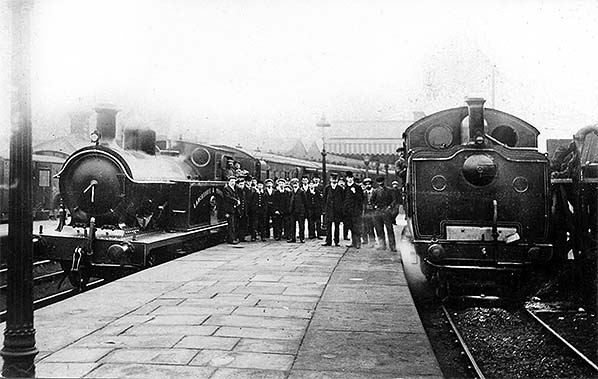

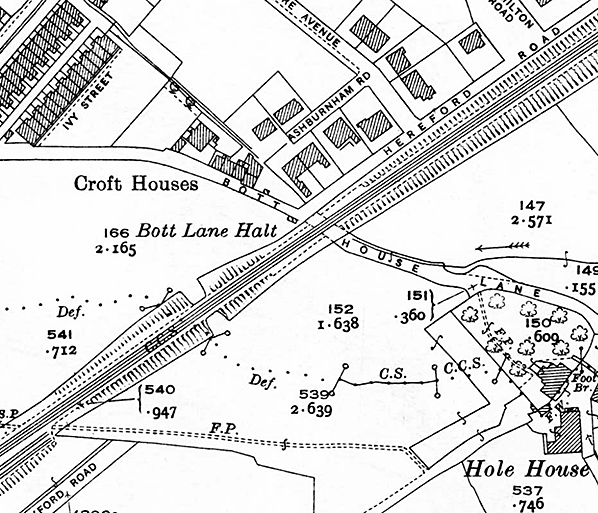
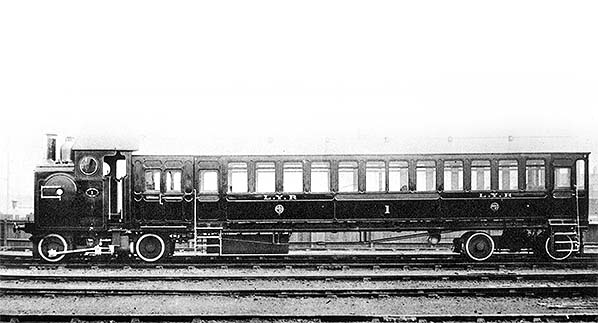
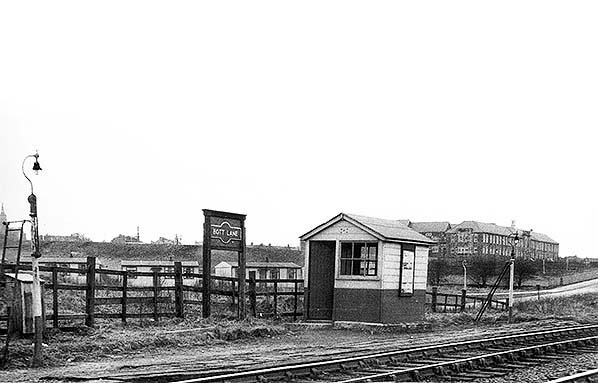
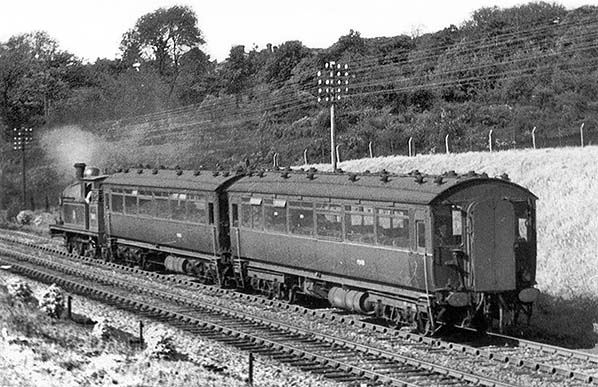
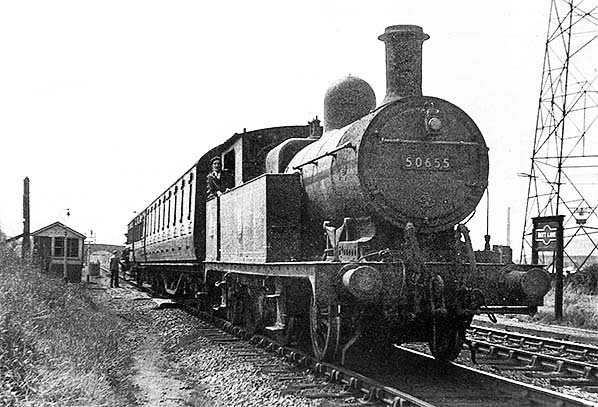
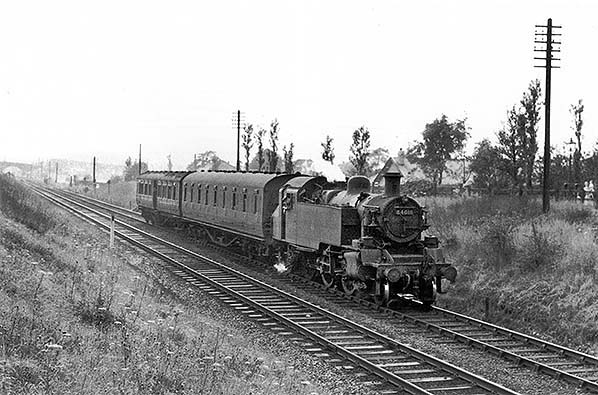
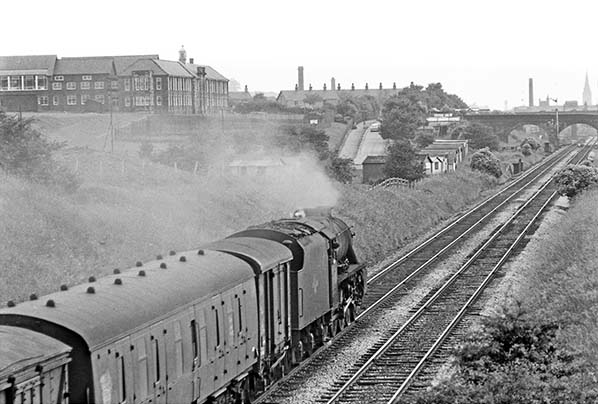
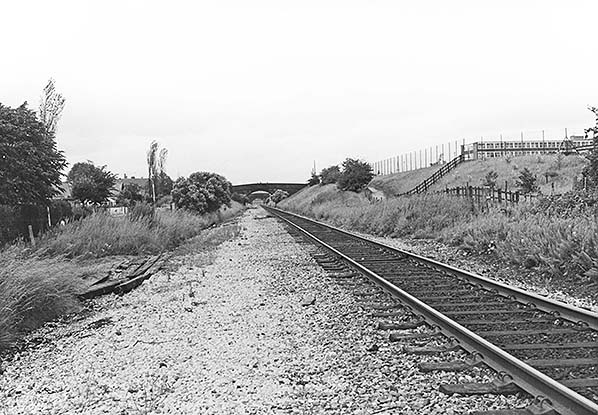
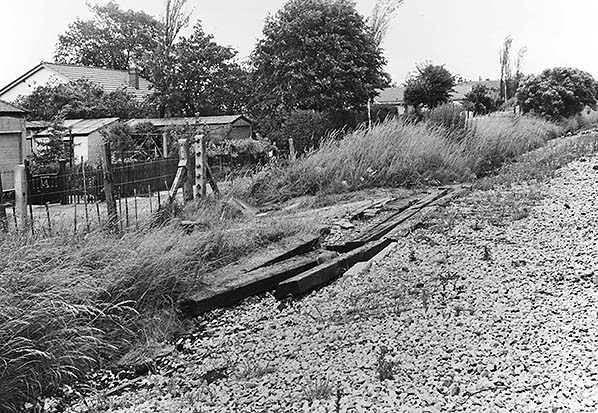
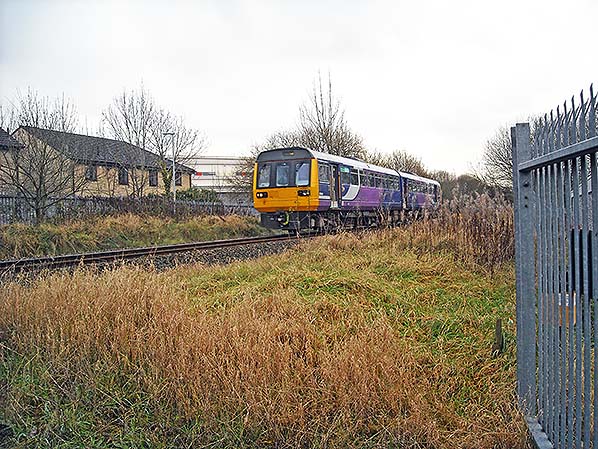
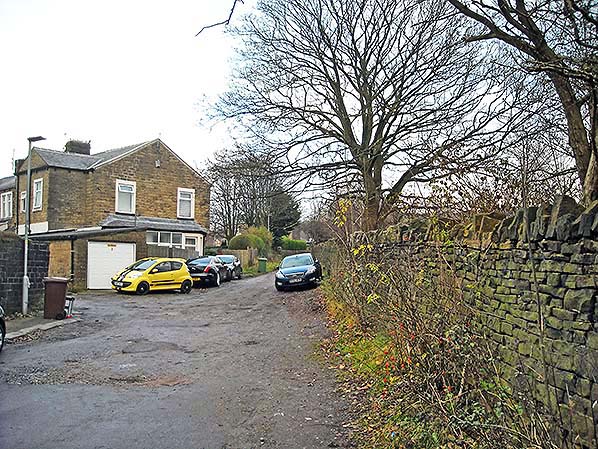
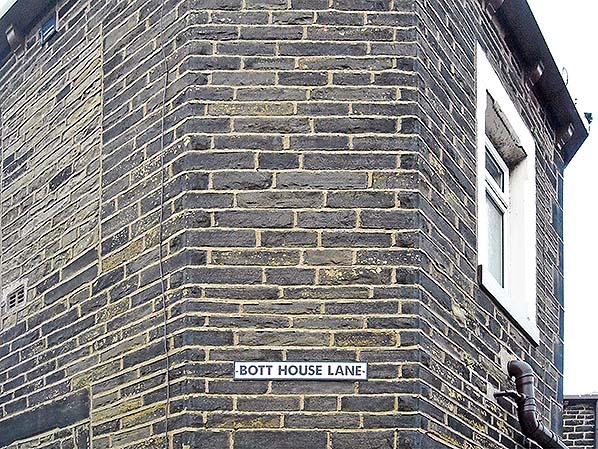

 The decline in traffic on the LYR in 1903 exactly coincided with the opening of electric street tramways in Nelson and Colne, the principal route being along Manchester Road and Leeds Road (Nelson) and Burnley Road (Colne), parallel and close to the railway. Nelson’s first 4ft-gauge line opened on 23 February 1903, and Colne’s on 28 November. Through-running was not possible until 1912 thanks to the low bridge under the LYR at Colne station; in this year two trams of reduced height were acquired which could pass safely under the bridge. To the south the Nelson trams connected with the Burnley network, which operated steam trams from the opening of the first route in 1881 but converted to electric traction allowing through running to Nelson. Burnley’s tramways were municipally owned from 1900; Nelson’s from the outset in 1903; and Colne’s from 1914.
The decline in traffic on the LYR in 1903 exactly coincided with the opening of electric street tramways in Nelson and Colne, the principal route being along Manchester Road and Leeds Road (Nelson) and Burnley Road (Colne), parallel and close to the railway. Nelson’s first 4ft-gauge line opened on 23 February 1903, and Colne’s on 28 November. Through-running was not possible until 1912 thanks to the low bridge under the LYR at Colne station; in this year two trams of reduced height were acquired which could pass safely under the bridge. To the south the Nelson trams connected with the Burnley network, which operated steam trams from the opening of the first route in 1881 but converted to electric traction allowing through running to Nelson. Burnley’s tramways were municipally owned from 1900; Nelson’s from the outset in 1903; and Colne’s from 1914. The LYR ‘rail-motors’ perhaps went some way to win traffic back from the trams, but their services were less frequent and at irregular intervals. Perhaps the LYR could have taken advice from the consultants who counselled the North Eastern Railway that their Tyneside electrics should run at least every 20 minutes and at regular intervals so that passengers needed no timetables and could turn up at their station at any time in the knowledge that they would not have long to wait for a train. A glance at the timetables below will show how far short of the ‘frequent and regular’ pattern the Burnley-Colne rail-motor service fell, although it must be pointed out that Burnley Bank Top, Brierfield, Nelson and Colne stations were also served by a good number of longer-distance trains. The advantage that the rail-motors enjoyed was a much faster end-to-end service than the trams of the three separate operators could provide.
The LYR ‘rail-motors’ perhaps went some way to win traffic back from the trams, but their services were less frequent and at irregular intervals. Perhaps the LYR could have taken advice from the consultants who counselled the North Eastern Railway that their Tyneside electrics should run at least every 20 minutes and at regular intervals so that passengers needed no timetables and could turn up at their station at any time in the knowledge that they would not have long to wait for a train. A glance at the timetables below will show how far short of the ‘frequent and regular’ pattern the Burnley-Colne rail-motor service fell, although it must be pointed out that Burnley Bank Top, Brierfield, Nelson and Colne stations were also served by a good number of longer-distance trains. The advantage that the rail-motors enjoyed was a much faster end-to-end service than the trams of the three separate operators could provide. The new stations / halts opened by the pre-Grouping companies ranged from primitive rail-level affairs without lighting or shelter to more ambitious structures with platforms of conventional height with waiting rooms and illumination. By today’s unforgiving health and safety standards Bott Lane was incredibly primitive. The two platforms, if they could be dignified with such a description, consisted of a cluster of railway sleepers, and passengers had to board or alight from trains by means of lowered steps. The accompanying photograph, taken shortly before it closed, shows the up (south-east) platform accompanied by a modest, enclosed timber waiting shed with windows, a couple of electric lamp posts and an LMS nameboard (without the ‘Halt’ suffix).
The new stations / halts opened by the pre-Grouping companies ranged from primitive rail-level affairs without lighting or shelter to more ambitious structures with platforms of conventional height with waiting rooms and illumination. By today’s unforgiving health and safety standards Bott Lane was incredibly primitive. The two platforms, if they could be dignified with such a description, consisted of a cluster of railway sleepers, and passengers had to board or alight from trains by means of lowered steps. The accompanying photograph, taken shortly before it closed, shows the up (south-east) platform accompanied by a modest, enclosed timber waiting shed with windows, a couple of electric lamp posts and an LMS nameboard (without the ‘Halt’ suffix).
 Returning to the motive power on the Rose Grove – Colne line, LYR rail-motor units, with occasional use of an extra trailer car, were superseded by the 2-4-2T and 2-carriage type of motor train. This arrangement lasted until the mid 1950s when conventional trains with compartment suburban stock became the order of the day. Several years after the withdrawal of the local Rose Grove – Colne service, DMUs arrived in 1961 on the Preston-Colne-Skipton route and they took over nearly all local services in 1962.
Returning to the motive power on the Rose Grove – Colne line, LYR rail-motor units, with occasional use of an extra trailer car, were superseded by the 2-4-2T and 2-carriage type of motor train. This arrangement lasted until the mid 1950s when conventional trains with compartment suburban stock became the order of the day. Several years after the withdrawal of the local Rose Grove – Colne service, DMUs arrived in 1961 on the Preston-Colne-Skipton route and they took over nearly all local services in 1962.
 Home Page
Home Page